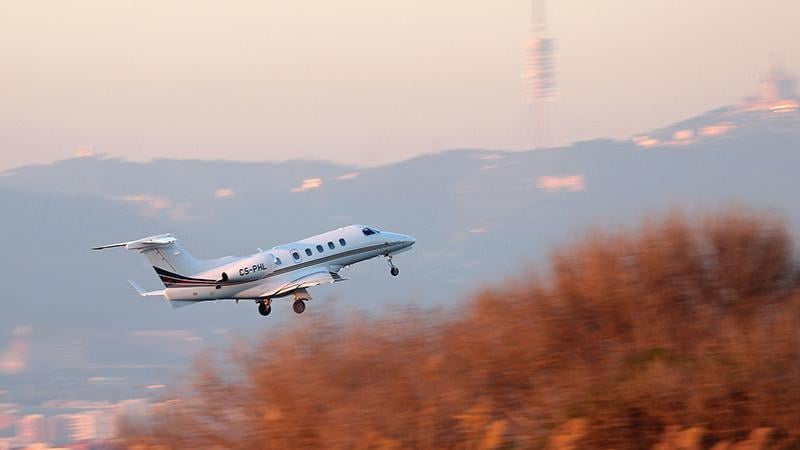This article is published in Aviation Week & Space Technology and is free to read until Nov 21, 2024. If you want to read more articles from this publication, please click the link to subscribe.

One of the pleasant surprises in the post-COVID-19 world is the robustness of the business aviation segment. Business jet production is growing, production backlogs are solid, and flight activity is up considerably compared with 2019. A curious phenomenon underpins this growth. Aircraft utilization by Part 91 corporate flight departments—traditionally the linchpin of business aviation—is down, while utilization by fractional operators and aircraft management companies has skyrocketed. Business aviation is increasingly thought of as a service. What is happening?
In the first seven months of 2024, 2.1 million global business aviation flights occurred—up 31% compared with 2019—comprising 3.5 million flight hours. Some 383,000 of these flights were by fractional operators—up an astounding 62% during the same period. Flights by aircraft management companies, which operate charter flights using client-owned equipment, increased 43%. Flights by branded charters, where aircraft are owned by the operator, were up a more modest 11%. In contrast, corporate flight department activity was down 9%.
It is as if the business aviation world was turned upside down. What is causing these changes?
The first reason is economic: Business aviation owners are seeking a better return on their sizeable investments. While airlines typically operate their aircraft 7-11 hr. per day, corporate flight departments average just 30 min. Higher aircraft utilization lowers the cost per seat mile while improving the asset productivity. This is one reason flight departments and owner-operators are turning to aircraft management companies to operate their aircraft for charter flights during downtime.
Second, the burden of running a Part 91 corporate flight department is increasing. The cost of regulatory compliance and complexity of aircraft maintenance continue to grow, and it has become more difficult to recruit, develop and retain pilots and maintenance technicians. Larger fleet operators are better positioned to deal with these challenges.
A third reason for the shift is sustainability, especially in Europe, where corporations must now issue nonfinancial reports that detail direct greenhouse gas emissions from sources controlled or owned by an organization. Some companies are reducing flight department activity to hold these emissions in check, even though business aviation comprises just 0.04% of global human-caused carbon emissions.
Finally, demographics could play a role in this trend. Anecdotally, many new business aviation customers are younger executives who grew up with the sharing economy, using services such as Uber and Airbnb. Business aviation as a service fits this model.
The implications of these shifts in business aviation operations are mostly good news for the sector. The COVID-19 crisis brought tens of thousands of new customers to business aviation, lured by the ease of access and security afforded by fractional ownership and charters. This is the latest chapter in business aviation’s expanding reach to new customers by increasing accessibility and value.
Fractional operators are harnessing the growth as they achieve scale that rivals major airlines. NetJets now boasts 750 aircraft supported by a network of 12 maintenance service hubs as well as its own terminals. Its 460,000 annual departures mean that one in six U.S. business jet flights is in a NetJets aircraft. Flexjet is the solid No. 2 fractional operator, with 270 aircraft—more than double its 2018 fleet size. It recently announced plans to integrate vertically on maintenance and completions and open a private terminal for customers at Farnborough Airport in England.
Business aviation maintenance, repair and overhaul is booming because of the more than 30% increase in utilization since 2019. Bombardier, for example, is on track to reach its goal of $2 billion in services, which seemed highly optimistic just a few years ago. Most business aircraft OEMs now earn 30% or more of their revenue from services and are investing to grow their global service center networks.
One hidden downside of the shift to fleet operations is a modest headwind for production. Higher utilization per aircraft—fractionals average 770 hr. per year—means fewer aircraft are required for growth than before.
Business aviation has always had a knack for evolving and reinventing itself. “Business aviation as a service” is fueling the latest wave of growth, which is great news for stakeholders.
Contributing columnist Kevin Michaels is managing director of AeroDynamic Advisory in Ann Arbor, Michigan.





